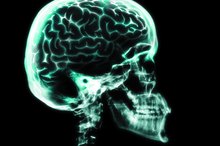The Difference Between Catecholamines & Noncatecholamines
What happens when you are faced with any type of danger? In animal kingdom there is a fight-or-flight syndrome that is activated within the body when faced with danger. In other words, the adrenal glands are activated to save the body. When this happens the andrenergic system is activated. The system releases adrenergic agonists which are also known as "sympathomimetics." This name is derived from its characteristics which is to mimic the symptoms of the sympathetic nervous system.
What are Catecholamines?
The catecholamines are hormones that are released by adrenal glands when a person is faced with any type of stress. This is a fight-or-flight response by the adrenal glands that is activated for the survival of the person. The role of catecholamines is to increase breathing rate, heart rate, blood pressure, muscle strength and mental alertness. To support the functions of the fight-or-flight syndrome in the body, blood flow is pulled away from the skin, and redirected to the brain, kidneys and heart for this purpose. Some examples of catecholamines in the body are adrenaline or epinephrine, dopamine and norepinephrine.
- The catecholamines are hormones that are released by adrenal glands when a person is faced with any type of stress.
- To support the functions of the fight-or-flight syndrome in the body, blood flow is pulled away from the skin, and redirected to the brain, kidneys and heart for this purpose.
What are Noncatecholamines?
The Process of Muscle Relaxation & Contraction
Learn More
Noncatechalamines are adrenergic drugs that are used to activate the alpha and beta preceptors. These drugs do not contain catechol in their nucleus. Some examples of these drugs are ephedrine, phenylephrine, amphetamine, metatraminol and methoxamine. These drugs are used as treatment for various ailments such as against constriction of blood cells, for achieving muscle relaxation with ease, for nasal and eye decongestion and for dilatation of bronchi.
- Noncatechalamines are adrenergic drugs that are used to activate the alpha and beta preceptors.
Differences
The basic difference between the catecholamines and noncatecholamines is that one is produced within the body and the other is the name given to a groups of drug that generate the same reaction in the body as the catecholamines 1. The noncatecholamines can be indirect-acting, direct-acting and dual-acting 1. The direct-acting noncatecholamines are used especially to stimulate alpha and beta receptors 1. These include isotharine, terbutaline and albuterol while dual-acting ones include ephedrine.
The Most Important Differences
List of Body Systems
Learn More
The catecholamines are always and exclusively direct-acting. On the other hand, since the noncatecholamines are direct, indirect and dual-acting they can be administered post operation, they last longer and they have the ability to cross the blood brain barrier 1. Used mostly in near death cases, the noncatecholamines are as a matter of fact life-saving drugs in more ways than one 1.








